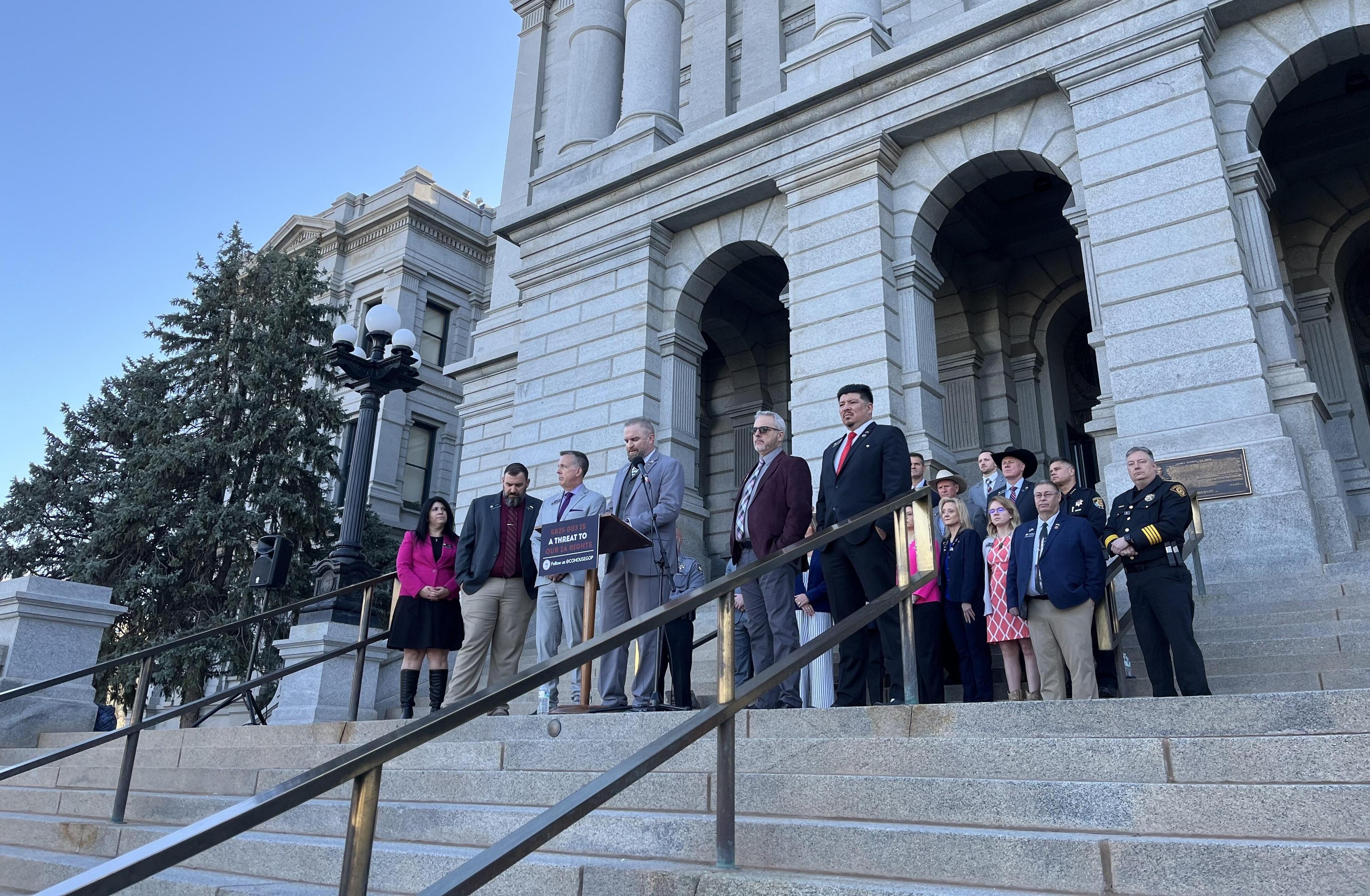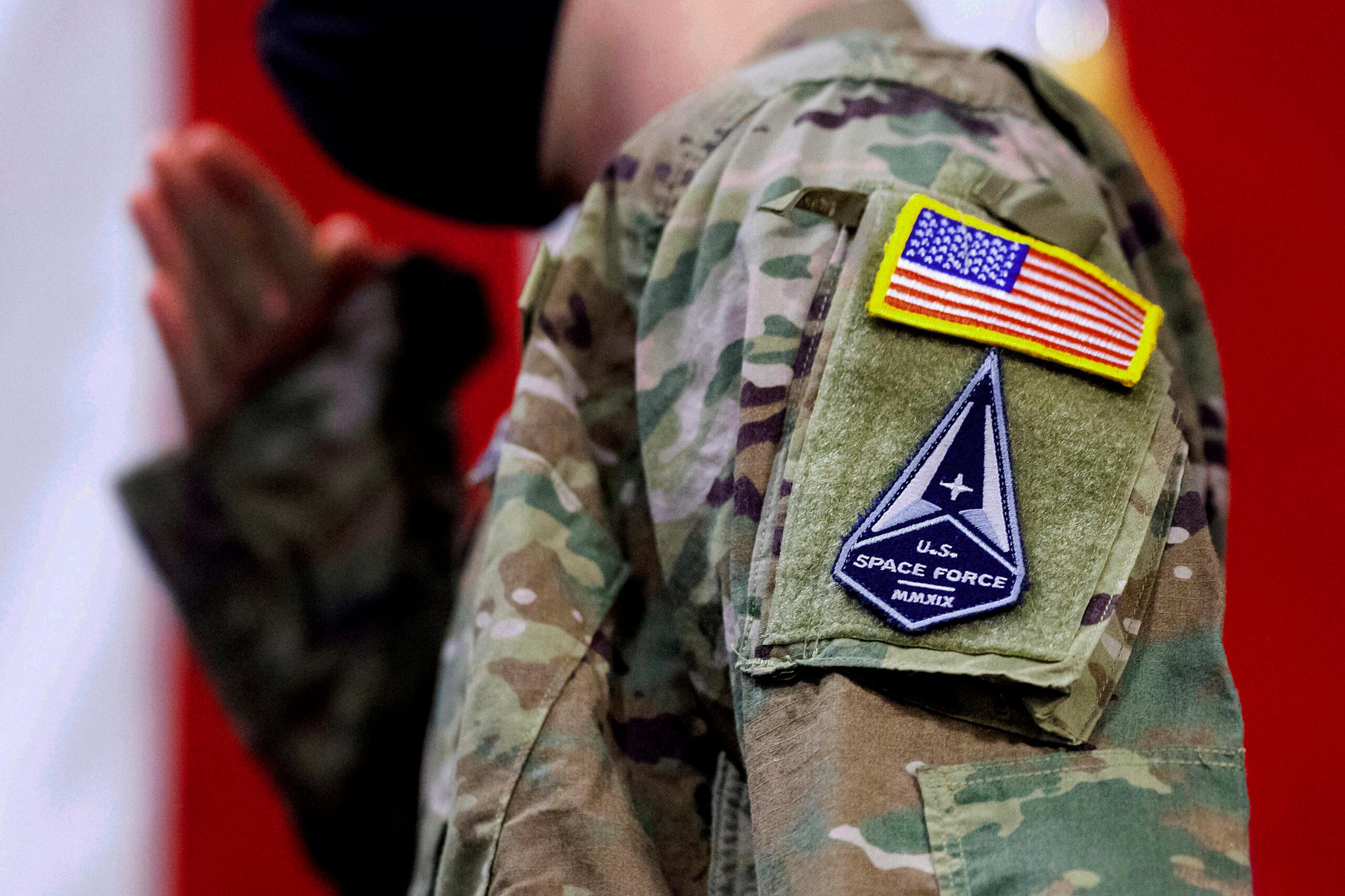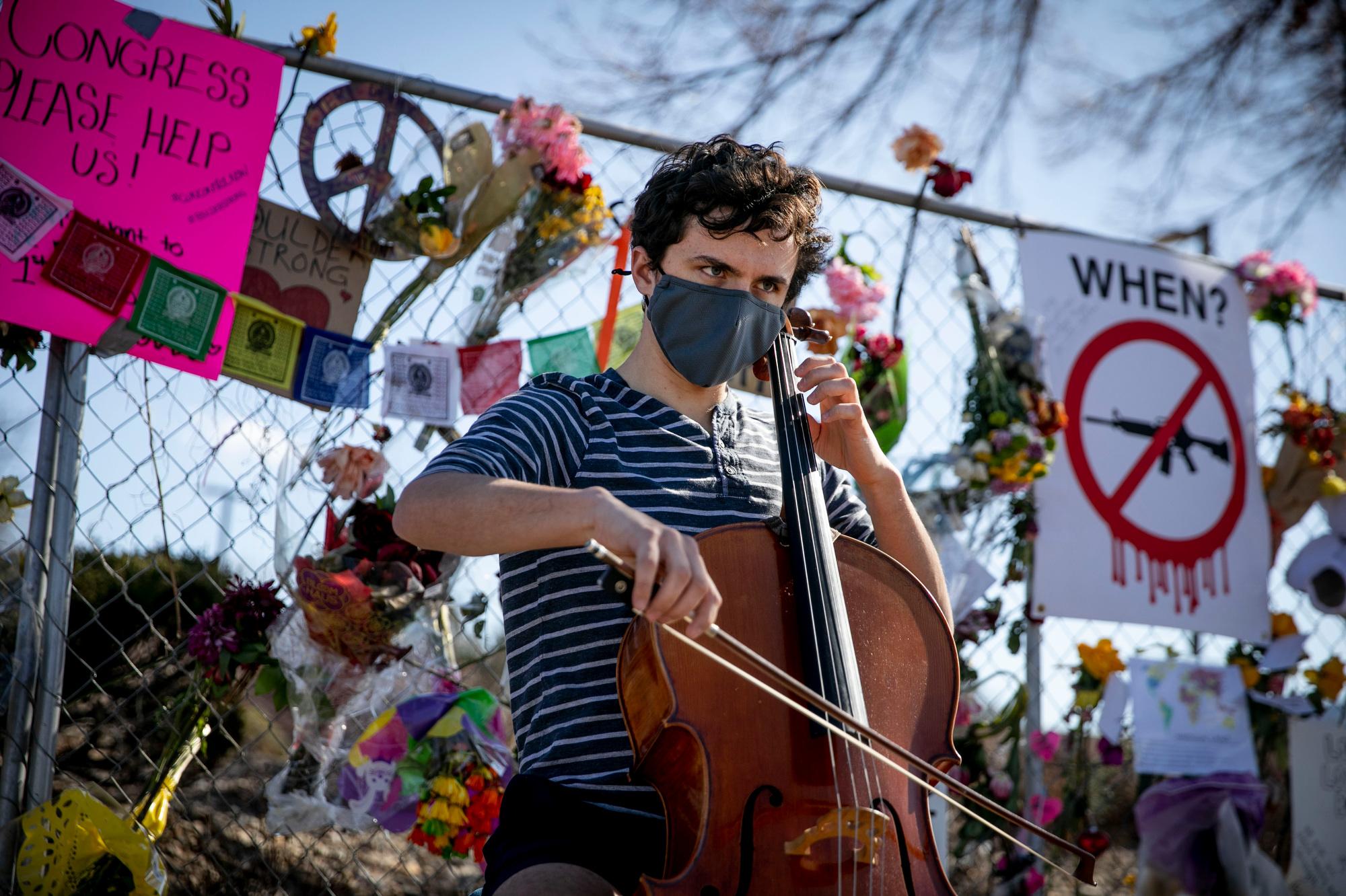
Less than a day after the mass shooting in Boulder on March 22, the flowers began to arrive.
So did balloons, candles, signs, notes and stuffed toys. They arrived handheld by mourners looking to pay their respects to the ten lives lost at the grocery store. In the subsequent week, what began as a sparse collection of small bouquets blossomed into an emotional outpouring of grief with hundreds, if not thousands, of items marking a spot that may never be the same.
It’s a spot that has stayed with cellist Louis Saxton. He narrowly escaped the shooter himself.
“I felt so much guilt for having made it out, and so I wanted to pay my respects and give back what I could to those who were not as fortunate as I was.”
Instead of flowers, Saxton chose music, the art form he knows best. The University of Colorado Boulder College of Music freshman paid his respects by stopping at the memorial each day over ten days in honor of the ten lives lost. He chose pieces that conveyed a sense of sadness and solace, like the preludes of Bach’s Suite No.1 in G major and Suite No. 4 in E-Flat Major.
“Music is one of those universal languages where it's oftentimes much better at conveying emotions than words are,” Saxton said. “I feel like everyone is able to relate a little bit, no matter if they're a professional classical musician or just somebody who is hearing cello for the first time.”
Since he began performing the day after the shooting, Saxton said he received support from the community, social media and his college, where friends and teachers have been especially understanding. All of that has affirmed his decision to come sit and play at this spot.
“I was very nervous to come back the first day. I wasn't sure whether or not I wanted to be here, after the event had happened,” he said.
By nature, the pop-up memorials that bloom in the aftermath of a tragedy are just as ephemeral as a musical tribute. What happens to them in the long term is a question museums across the country are starting to think about even as the memorials themselves are developing. The Museum of Boulder launched the Boulder Strong Project, which will preserve some items from the memorial for future visitors.
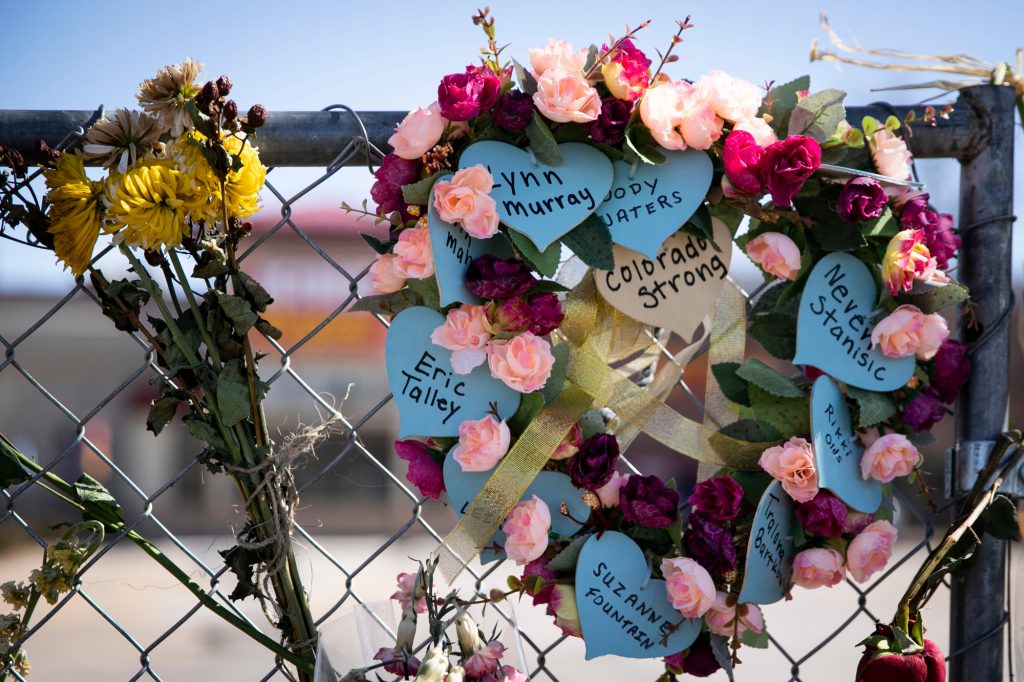
“There are so many family members of victims that because it's a pandemic can't travel and they can't experience what many in our community in Boulder are experiencing by going to the site or driving past it,” said museum Executive Director Lori Preston. “We want to be prepared to have these items, so when they're able to visit them and still gain somewhat of the sense of what the community wanted to express.”
The challenge is knowing what to take and when, since the memorial is still helping some in Boulder process the shooting and honor the victims. In addition to physical objects, the museum is also storing digital artifacts like social media posts and news stories in an effort to collect the experience as holistically as possible.
“It's sort of been a question of how do you collect something while you're also grieving and also dealing with that situation,” said curator Chelsea Pennington Hahn. “We've been doing that for the past year, with the pandemic and the racial justice movement, this idea of rapid response collecting is a really important idea for museums right now and going forward.”
Soon after the memorial began, the Museum of Boulder received an email from Pamela Schwartz of the Orange County Regional History Center in Orlando, Florida. She developed a set of best practices for museums to preserve these community memorials after the Pulse Nightclub shooting in her city in 2016.
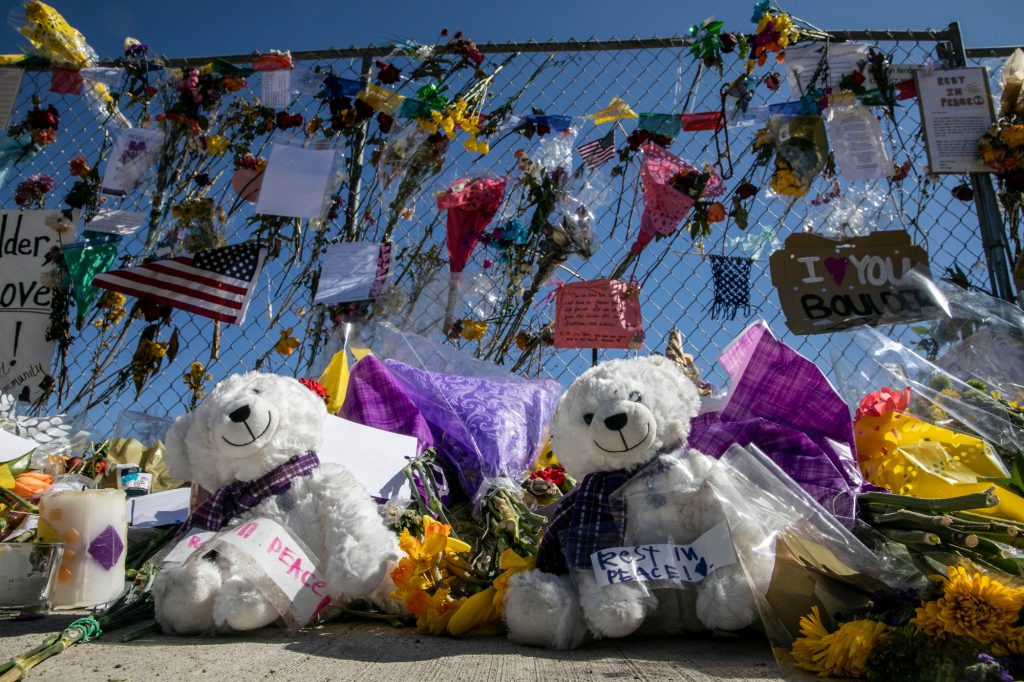
In addition to helpful advice for curators’ self-care, Schwartz told the museum staff in Boulder that preservation work had to come second to a community’s need to grieve.
“The thing that I really have taken to heart is remembering that these are memorials first, they're not collections of artifacts or things like that,” said Pennington Hahn. “As a collection specialist, my gut was like, ‘It's going to rain, it's going to snow. How do we protect them?’ And she just sort of reminded me, you don't. It's a memorial first and weather is going to happen.”
When strong winds blew into Boulder this Monday, a week after the shooting, the museum made its first round of collections of items from the memorial. It will not be the last. As the museum tries to save what it can, the memorial is still growing and changing. Flowers are wilting and mourners put new ones in their place.
That same windy day, Tim Johns fastened a sign to the memorial’s fence that he made with his two teenage daughters. It was still too hard for them to visit the site.
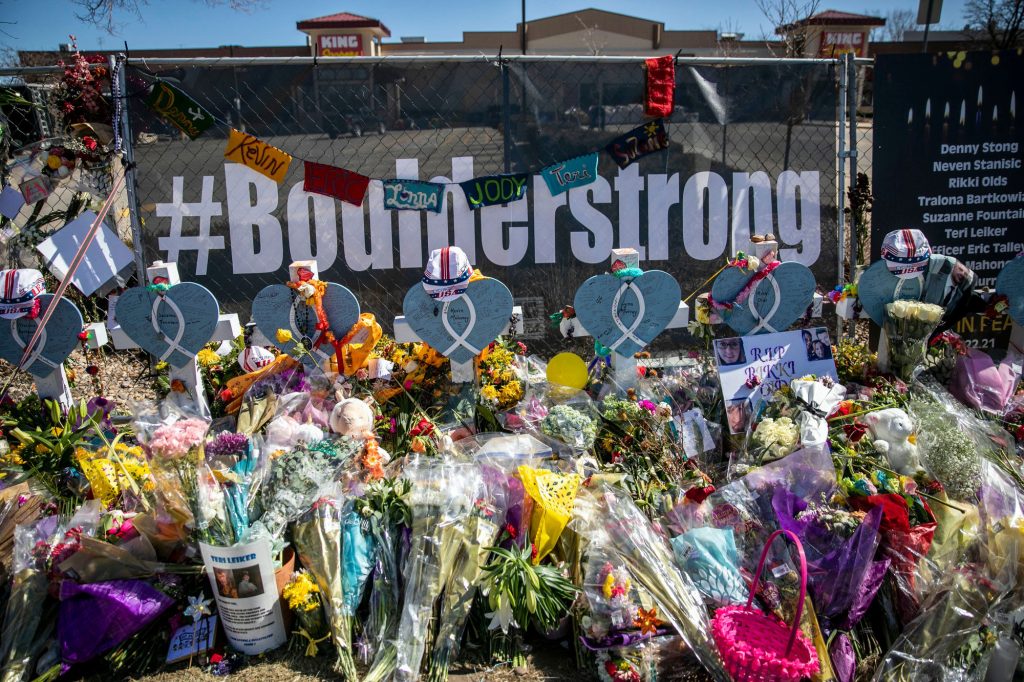
“They personally knew the business owner down on Pearl Street because they've interacted with her a lot in her shop. They were very sad,” said Johns.
The shop owner on Pearl Street was Tralona Bartkowiak, one of the ten people who died. Her store is just blocks away from the Museum of Boulder now working to save the memorial.
Johns said he also knew some of the people who worked in the King Soopers. “I haven't driven by here since it happened, and I wanted to see everything.”
Johns said making the poster with his daughters was their way to mourn those who were lost. “There's an outpouring of goodness in our community,” he said. “People really do care about each other.”
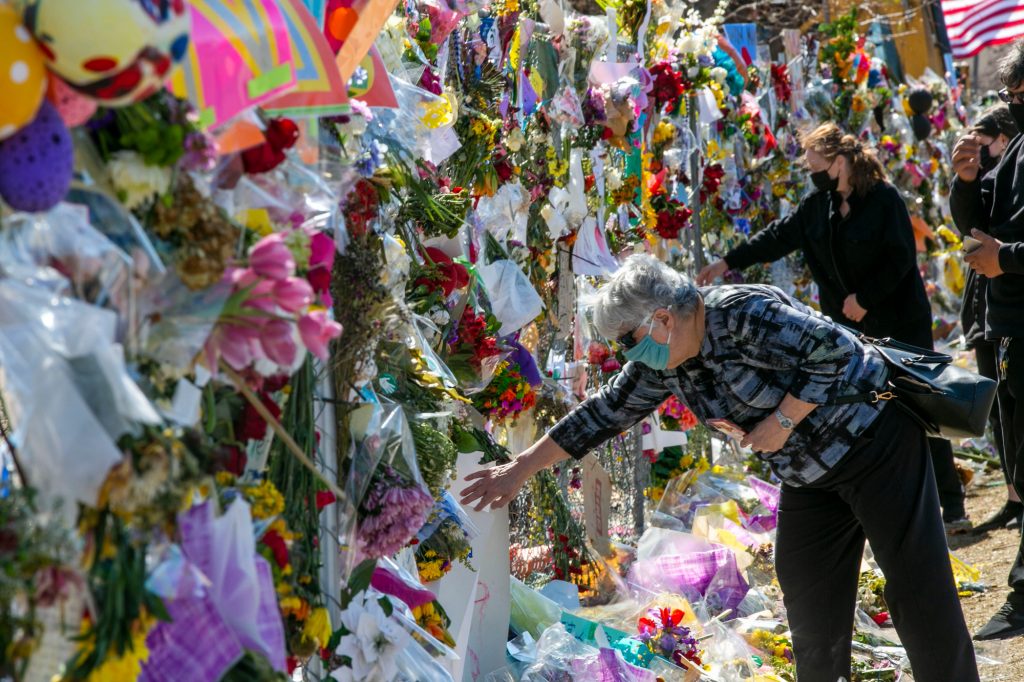
- Donations: How You Can Help The Families Of The Boulder Shooting Victims
- Victims: Who We Lost In The Boulder King Soopers Shooting
- King Soopers Employees: "We Weren't Already Hard Enough? This Had To Happen Too?”
- Motive: Police Are Still Searching For A Motive
- Weapon: The Firearm The Suspect Bought Looks Like A Rifle, But It's Regulated Like A Handgun
- Guns: We Want To Hear From You: What Do You Want To Know About Gun Laws In Colorado?
- Next Steps: Colorado Lawmakers Are Considering A Ban On 'Assault-Style' Weapons
- In Photos: Here's Some Of What We Saw As Last Week Unfolded
- Mass Shootings: Colorado Has More Mass Shootings Than Other Places
- Mental Health: As Mass Shootings And Pandemic Collide In Colorado, Mental Health Experts Urge Connection Now More Than Ever
- Suspect: Boulder DA expects to file additional charges against the 21-year-old shooter



